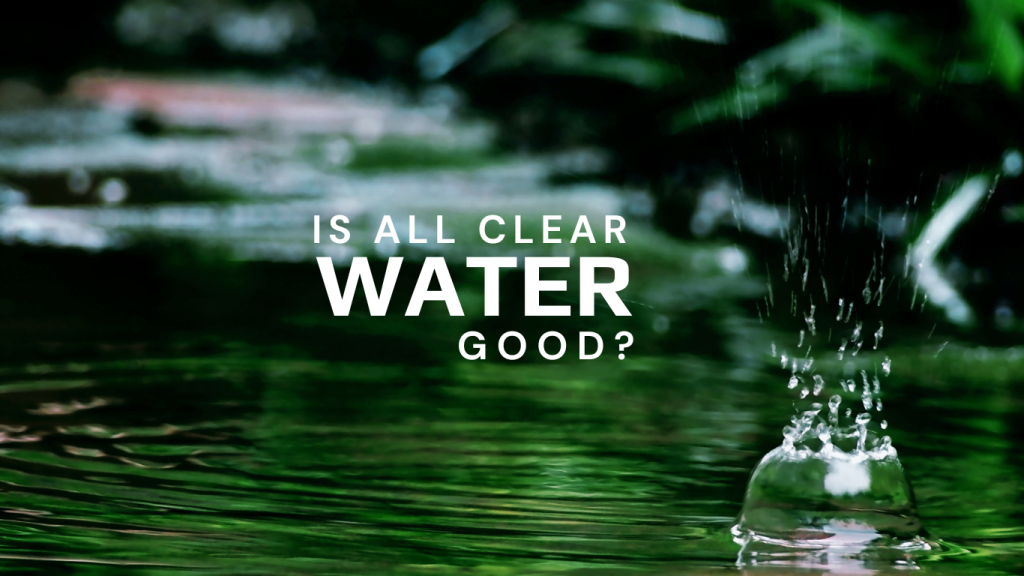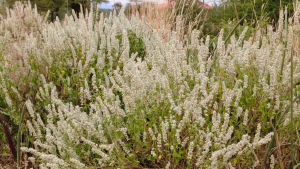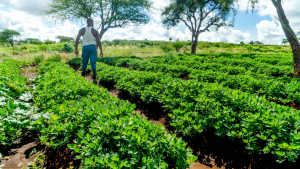
Imagine stepping up to a sparkling stream, the water so clear you can see the pebbles at its bed. It’s a picture-perfect scene. Clean water, by popular definition, is water that is free from visible contaminants. Yet, what lurks beneath the surface of clear water? Chemicals, microorganisms, heavy metals…? Let’s delve deeper into this seemingly clear issue.
Introduction
Clean water is often hailed as the elixir of life, and rightly so. It’s essential for our survival, our health, and our well-being. However, beneath its crystal clarity of clear water, a complex narrative unfolds. While murky, stagnant water is an obvious red flag, invisible contaminants can lurk in even the most pristine-looking streams. These hidden dangers, like bacteria, parasites, and even harmful minerals, can– wreak havoc on your health if ingested and, pose threats to biodiversity.
Debunking the Clear Water Myth: Unseen Undercurrents
At first glance, the clarity of water may deceive the untrained eye. As we navigate through the nuances of what truly constitutes “clean water,” we discover that not all that glistens is indeed golden.
The purity of water, its source, and the journey it undertakes to reach us, all determine how safe water is.
Here's why you shouldn't trust appearances when it comes to water:
Invisible Threats: Just because water looks pristine doesn’t mean it’s free of harmful bacteria, parasites, or even dissolved chemicals. These microscopic menaces can cause a whole host of unpleasant illnesses, from stomach cramps to serious infections. Waterborne diseases like cholera, typhoid, and dysentery are stark reminders of the invisible threats that lurk beneath the surface of seemingly clean water.
The Big Minerals: Water high in minerals like arsenic or fluoride can be hazardous in high concentrations. While these minerals are essential in tiny amounts, exceeding safe limits can lead to long-term health problems.
The Big Picture: Even if the water itself seems okay, what about its source? Industrial processes, agricultural runoff, and even natural occurrences can introduce invisible contaminants into our water sources.
The Pitfalls of Over purification:
In our zeal to purify water, we often resort to aggressive treatment methods that strip it of essential minerals and nutrients. While removing contaminants is crucial, excessive purification can render water devoid of its natural benefits, leaving it bland and nutritionally deficient. Moreover, the chemicals used in purification processes can introduce their own set of concerns, raising questions about the long-term effects of consuming chemically treated water.
So, where does this leave us?
Are we doomed to drink from a perpetual fountain of uncertainty? Not quite. The key lies in striking a balance between purification and preservation. Rather than viewing water solely through the lens of cleanliness, we must adopt a holistic approach that considers both its purity and its innate qualities. This entails implementing sustainable practices that safeguard water sources while minimising harm to the environment and human health.
What does this mean for the average person?
Clean water is a good starting point, but true “good” water is also SAFE water.
Know your source: Natural springs and rainwater, when harvested responsibly, can be superior sources. If you’re unsure about the origin of the water, it’s always best to err on the side of caution. Stick to bottled water or wait until you reach a reliable source.
Embrace filtration: You can use water purification tablets, portable filters, or even boiling water can significantly reduce the risk of ingesting harmful contaminants.
Get it tested: Quality, not just clarity. Invest in comprehensive water testing. Visibility is just the tip of the iceberg. If you rely on a well for your drinking water, consider getting it tested regularly for common contaminants.
Environmental Considerations: Does the allure of clean bottled water justify the ecological price? Choose water sources and systems that promote environmental sustainability and replenish what is consumed.
The allure of bottled water, often marketed as the epitome of cleanliness, comes with a hidden cost. The production and disposal of plastic bottles contribute significantly to environmental degradation, prompting us to question whether the pursuit of clean water justifies the ecological price.
Why Choose Informed Water Consumption?
Choosing the right type of water not only benefits personal health but also contributes to the well-being of our planet. By making informed choices, we can ensure access to safe, nutritious water while preserving the environment for future generations.
FAQs
Q: Can water be too clean?
A: Yes, overly purified water can lack essential minerals. Balance is key.
Q: How can I contribute to water sustainability?
A: Support sustainable practices, conserve water, and educate others about the importance of responsible water use.
Q: Can I drink distilled water daily?
A: While safe, distilled water lacks minerals found in other waters, which can lead to deficiencies if consumed exclusively.
Q: How can I ensure my tap water is safe?
A: Use filters certified to remove contaminants specific to your area’s water supply.
Conclusion
In our quest for clean water, let’s not lose sight of the bigger picture. Clean water is a good starting point, but true “good” water is also SAFE water.
While purity is paramount, it’s not the sole determinant of water’s goodness. We must acknowledge the complexities of water quality, recognising that not all clean water is necessarily good. By embracing a nuanced perspective and adopting sustainable practices, we can ensure access to water that is not only clean but also safe, nutritious, and environmentally sound. After all, when it comes to water, the true measure of goodness lies not just in its cleanliness but in its ability to sustain life in its entirety.
Moreover, water, in its purest form, is a reflection of the ecosystem it flows from. At Ambokili Farm, we believe that understanding and respecting this life-giving resource is fundamental to our mission. Not all clean water is good if it compromises the health of our ecosystems and communities. Let’s pledge to protect our precious water sources, ensuring they remain vibrant and life-sustaining for generations to come.
Weave a tale of environmental stewardship, sustainability, and health.






